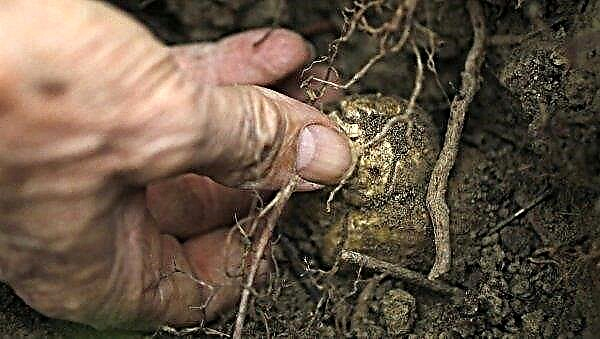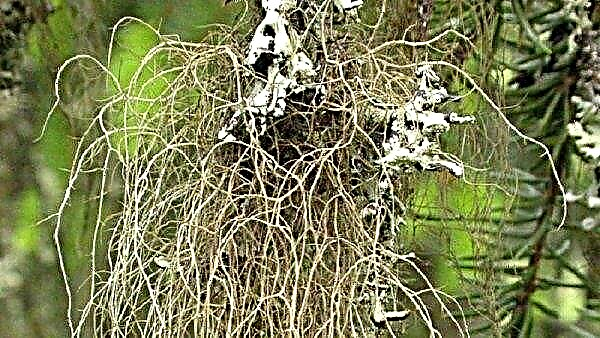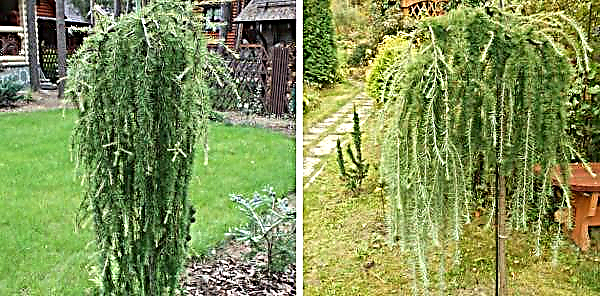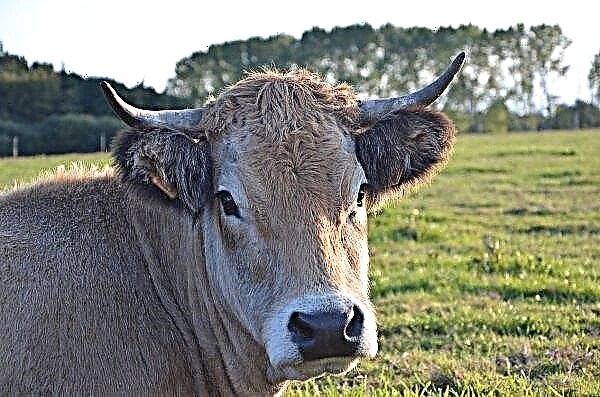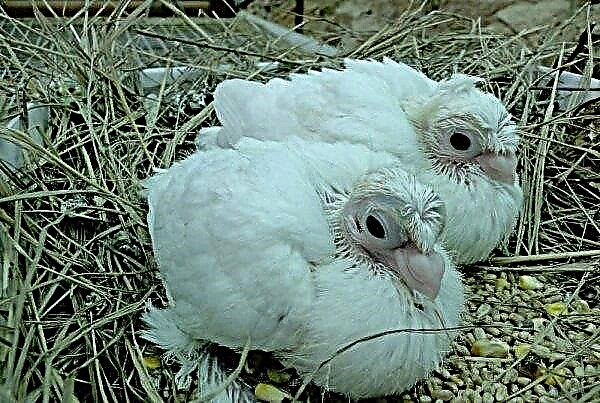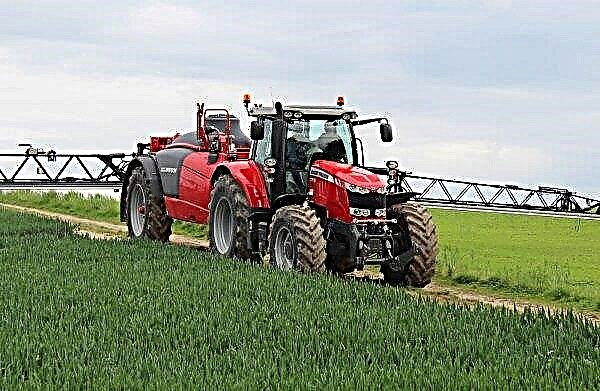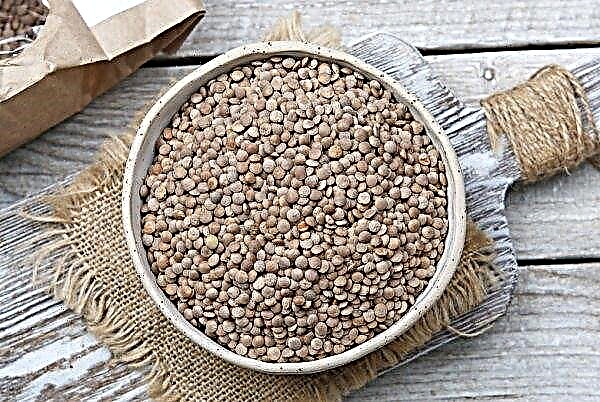Not all plants need soil to root. Representatives of the flora called epiphytes successfully grow using other plants, stones, trellises, aquariums, furniture items as any support - any stable surface, up to lampposts. One of such “unearthly” plants is atmospheric tillandsia, an unusual tropical exotic that can decorate any room with proper care. In the article, we will consider why tillandsia is so unusual and what features of cultivation are inherent in it.
Botanical description of the plant
Tillandsia belongs to the genus Bromeliad and comes from American tropical latitudes. In the wild, it can be found both in desert California and in the moist forests of Brazil and Ecuador. The plant is named after the scientist Elias Tillands, who contributed to the opening of the first botanical park in Finland. Atmospheric tillandsia is also known as gray, because the scales on its leaves, which normally absorb moisture from the air, become silvery in the dry period, filling with air. Tillandsia is a flowering plant, and its bright raspberry, blue or violet-blue (depending on the type) inflorescences beautifully contrast with thin silver-gray foliage. Most often, flowering occurs in the summer, for several months. Blooming once, after it the mother plant gradually dies, passing nutrients to the shoots.
Tillandsia is a flowering plant, and its bright raspberry, blue or violet-blue (depending on the type) inflorescences beautifully contrast with thin silver-gray foliage. Most often, flowering occurs in the summer, for several months. Blooming once, after it the mother plant gradually dies, passing nutrients to the shoots.
“Air” tillandsia are diverse, and each of the species has its own characteristics. The table below gives a general description of the main morphological parameters:
| Sign | Short description |
| Root system | Almost absent, used only for attachment to the surface |
| Stem | Small (average 20–50 cm), erect (with the exception of the usnee-shaped tillandsia, which hangs from a support and can reach 1–2 m in length) |
| Leaf shape | Elongated and narrow (no more than 10 mm wide). May be long or short. Cone-shaped |
| Leaf color | Most often gray, less often green. Covered with scales. In the violet variety, the leaves turn red in summer, before flowering. |
| Flower shape | Spike-shaped, diamond-shaped |
| Flower color | Red, Raspberry, Blue, Blue, Purple |
| Fruit shape | Thin, pointed or narrowly cylindrical capsule with many small seeds covered with hairs |
| Fruit color | Light brown |
House growing conditions
As already mentioned, tillandsia is noteworthy in that it can be placed in all kinds of containers and even simply attached to any hard surface. However, caring for atmospheric tillandsia is more complicated than potted plants.
Important! The soil for the considered tillandsia is not necessary and even harmful, since it prevents contact with air and leads to decay.
Location
Whatever capacity or support you use for tillandsia, first of all, remember that the bottom to which the plant attaches must be lined with materials such as:
- bark (including pine);
- moss;
- coir.

The list of the best growing places includes:
- Pine branches. In this case, a layer of coconut fiber is laid between the branch and the flower, or a mini nest of synthetic materials is attached to the branch, which helps to preserve moisture and ventilation.
- Hanging plastic pots.
- Baskets of bamboo / spruce / willow / plane tree / jute.
- Mesh planters.
- Wall panel from pine bark with tillandsia attached to it.
- Coconut Stems.
- Aquariums (in no case closed, for air circulation).
Important! When acquiring tillandsia, you need to immediately determine the place of its placement, so as not to injure the delicate stems with unnecessary movements and tyings.
Temperature
In general, tillandsia well perceives the microclimate of urban apartments.
The main requirements for the temperature regime are as follows:
- The absence of sudden changes.
- Air temperature is not less than +18 ° С (but they can withstand a short-term decrease to +12 ° С).
- Regular access to fresh air, airing (without strong drafts).
- In summer, it can be placed outdoors, protecting from rain.
Lighting
Proper lighting plays an important role in growing these plants. Unlike potted tillandsia, “aspirated” do not require too bright light, direct sunlight is unfavorable for them. Particularly suitable for partial shade, diffused or fully artificial lighting. In any case, the distance from the plant to the light source should not be less than 90 cm.
Air humidity
Being tropical plants, tillandsia require a consistently high air humidity, at least 70–80%, due to moisture adsorption by leaves. Increased attention should be paid to this factor in the winter during the period of functioning central heating. At this time, it is better to use humidifiers. This is especially true for those species that grow in areas with very high humidity (for example, violet-flowered tillandsia). Typically, these species have very delicate, thin leaves. Some gardeners grow epiphytic tillandsia in the bathroom. However, one must not allow the leaves to be constantly wet, otherwise the flower will become sick.
Did you know? “Air” tillandsia feel good in tropical deserts (for example, Peruvian), where there is almost no rainfall. The secret is that high winds are constantly maintained by winds from the ocean.
Home Care
Observing the following rules for the care of tillandsia, you can achieve its active growth and beautiful flowering, pleasing to the eye.
Watering
“Atmospheres” do not require watering in its classical sense. They need only regular spraying of leaves.
Water for this should be:
- soft (pH 6.5);
- standing in an open container for at least 4 hours;
- quite warm, room temperature.
The procedure is carried out daily in the summer, and as the onset of cold weather, irrigation is gradually reduced and carried out as necessary (on average 1-2 times a week). You need to pay attention to the leaves, which in case of lack of moisture begin to curl.
Important! When spraying, water should fall into the center of the leaf outlet, but in no case should it stagnate. Otherwise, excess water must be drained from the flower.
Top dressing
Fertilizers are not a mandatory part of the care, provided that the plants are placed correctly, as described above. Bark and moss, decomposing, give the plant nutrients. If desired, you can feed tillandsia with a liquid mineral complex, reducing the recommended dose by 4 times and adding it to the water for spraying. Top dressing can be done once every 2 weeks, using universal complexes for indoor plants or fertilizers for bromeliads. In winter, top dressing is stopped.
Pruning
There is no need to form a crown. Pruning is done only to remove damaged or dead leaves. To do this, use scissors or a small garden pruner.
Transfer
Experts do not advise getting involved in transplanting atmospheric tillandsia. The latter, unlike their potted counterparts, require transplanting to a new place only if the substrate on which they grow is completely decomposed.
Important! When choosing a fertilizer, special attention should be paid to its composition: it is desirable that it has a minimum copper content, since it is very toxic for this type of epiphyte. Growth stimulators are strongly discouraged.
Breeding
Over the past years, Tillandsia have been gaining more and more popularity among flower growers and interior decorators. In this regard, the issue of reproduction of these plants is usually very interesting for people involved in their cultivation. Consider the best way to propagate tillandsia.
Side shoots
“Atmospheres” propagate vegetatively by separating young shoots, that is, lateral shoots. This happens after flowering.
The sequence of steps is as follows:
- The shoot, already having 4-6 leaves and small antennae roots, is carefully separated from the stem with a sharp knife.
- The place of cut is treated with activated or charcoal for disinfection.
- A young shoot is attached to a future place of growth.
You need to be patient, as the growth process will be slow. Subject to the rules of care, flowering should be expected in 2 years.
Video: propagation of tillandsia by atmospheric lateral shoots
Seed cultivation
Reproduction using seeds at home is almost not practiced because of its complexity and cost. The soil for seeds should not be too coarse-grained, but also not shallow (it is very difficult to select the desired density), the air temperature in the room should be at least +25 ° C, and the lighting should be very good and constant. Despite compliance with all requirements, seedlings often die. In addition, it will take about 5 years to wait for flowering.
Did you know? In the world there are societies of Bromeliad lovers who publish special reference books, a magazine Journal of the Bromeliad Society, are engaged in the transfer of planting material and organize expeditions to tropical forests — in places of wild growth of tillandsia.
Growing difficulties
“Atmospheres” are rather capricious plants and instantly react to not very favorable growing conditions, which is expressed in diseases and the appearance of pests.
Disease
The plant is susceptible to various viral and fungal infections, in particular, gray rot. The disease manifests itself as a gray coating on the stem and leaves, which quickly passes into the stage of decay.
Many diseases contribute to diseases such as care:
- The content of the flower in a stuffy, unventilated room and too frequent, improper watering. This is especially true of the cold season, when all windows are closed, and the owner of Tillandsia abundantly watered the plant.
- Excessive feeding (adversely affect the immune system of the epiphyte).
- Low humidity (foliage curls, becomes pale and wilts).
- Exposure to direct sunlight (causes, first of all, the turning of leaves).
- Constant drafts.
- Hard watering (a calcareous deposit appears on the plant, which in the future can lead to the death of the flower).
 Treatment of fungal and viral diseases includes fungicide treatment and removal of diseased foliage. As prevention, charcoal can be used, which is sprinkled on the support of tillandsia.
Treatment of fungal and viral diseases includes fungicide treatment and removal of diseased foliage. As prevention, charcoal can be used, which is sprinkled on the support of tillandsia.Pests
The most common pests that this species of tillandsia suffers from are bromeliad shields and mealybugs.
Outwardly, their detrimental effect on the plant is manifested in:
- cobwebs and tubercles on the leaves;
- dark traces;
- sticky white coating;
- yellowing foliage.
If there are few insects, you can simply remove them manually. If the infection has gone far, it will require washing the plant with soap and water or even insecticide treatment. Growing atmospheric tillandsia is not as difficult as it might seem at first glance. Of course, you can’t just attach a flower to the first support it comes across and let the process go by itself. This flower, in fact, adapts well to home conditions, if you know the specific rules discussed in the article. In this case, tillandsia will feel comfortable in your home and will delight you with bright, unusual flowering.

